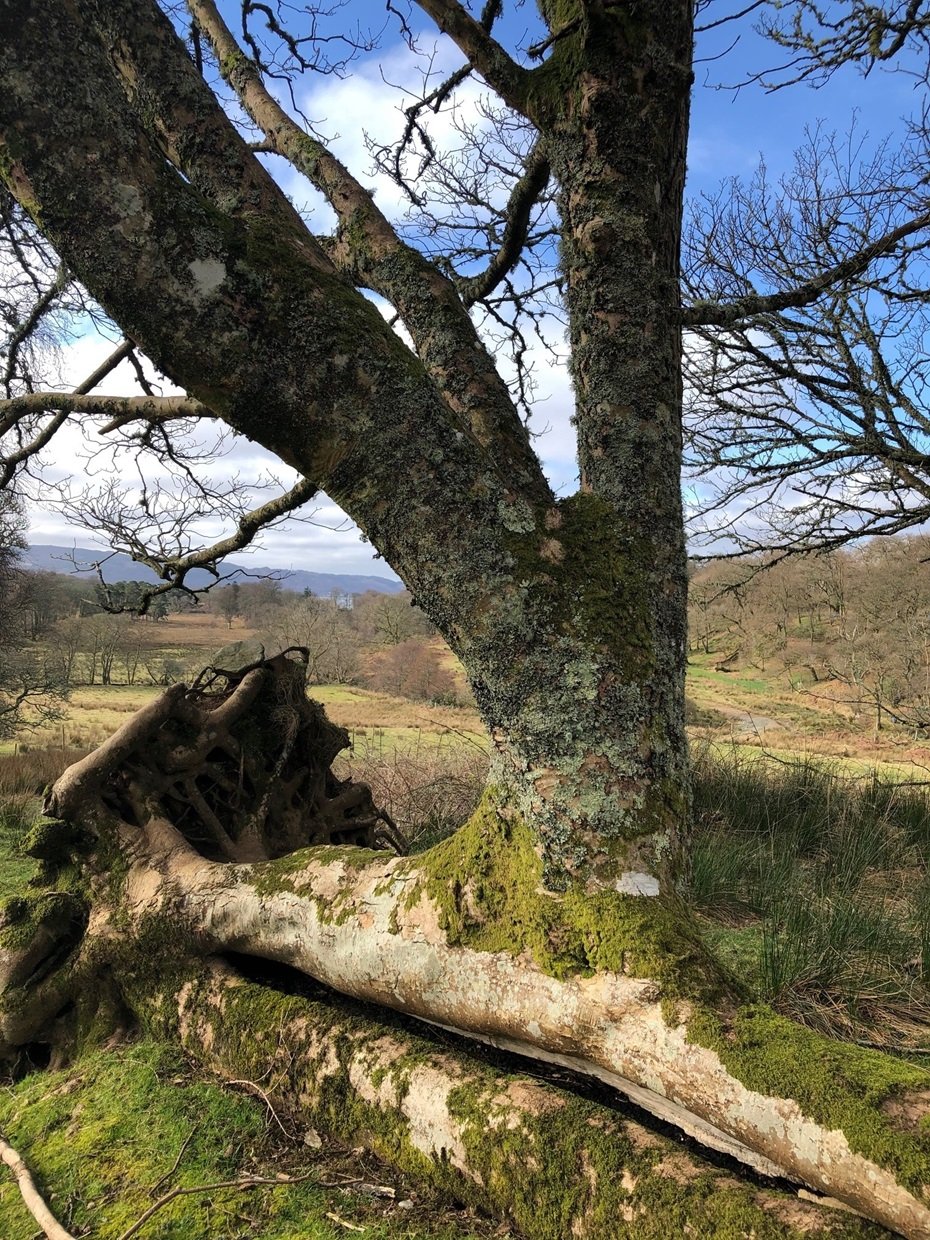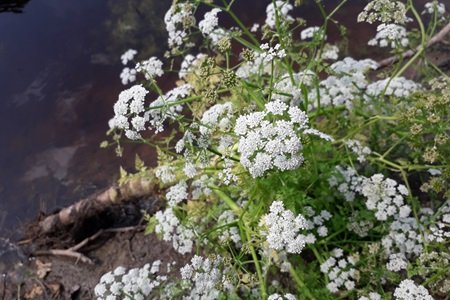Fran's Blogs
Unfeasible Trees, Triumphant Trees, and Trees that Try

Have you ever stopped and wondered at the tenacity of a tree which has been toppled in a storm – root ball flailing - and yet along its trunk, fifteen new young trees are surging their way towards the light? It’s a beautiful testament to the resilience of life.
You may well not have seen one. Not many of us get the chance because they are mostly chopped for firewood, whilst most other trees are encouraged to be mono stemmed to create harvestable timber. In woodlands managed for forestry, fallen trees are systematically cleared away and living trees expressly have their lower branches ‘cleaned’ to make sure that they grow tall and straight. All the trees that we plant in plastic tree tubes have no choice but to grow upwards in a straight line for the first several years of their lives.
Because it is missing from our memories, we don’t think twice about how entangled and interesting a woodland might once have been. In many woodlands its quite a challenge to find a tree which is wonky, or wibbly or just downright wild. Personally I love these trees – trees which have, against all the odds of animals browsing, people chopping, winds blowing, squirrels gnawing, and all sorts of other things assailing them - found a way to survive, and thrive, and live to old age, albeit with a few scars and one or two limbs missing.
There is a quirky, irreverent and sculpturesque quality to them which appeases my eye and my soul when set against a landscape of neatness and tidiness. And each one of these unfeasible trees has a story to tell about how it came to be so sculpted – sometimes we may be able to hear that story, and other stories are lost in the mists of time. Was this tree once felled by a beaver before they became extinct in Britain? Was it planted as a seed in a burial chamber which grew around its obstructions towards the light bursting forth into the fresh air? Or did it cling to a rocky crevice until the rocks fell and threw it tumbling downwards into a previously unforeseen abode?
These trees are wonderful to me. They have grown belligerently, as they wish, for decades if not centuries. Some grow at right angles where once they were caught under another tree branch, other trees ‘kiss’ and become enmeshed with each other, with separate species merging into one tree as bark swallows bark. They mark for me, places where the human hand has still not quite touched everything, whilst simultaneously creating a myriad of little niches for a multitude of species which would otherwise not be able to survive on our neater trees.
My mission, should I choose to accept it, is to bring these Transformational Trees back into our woodlands and landscapes. To create wilder spaces where we relinquish our need for orderliness, and allow nature to be as free form and creative as she wishes to be. If it works, then some time in the future the trees that you might see will be breathtaking in their wilful abandonment of human order and refreshing in their incredibly natural ‘tree-ness’.
Image: copyright Susie @ the_gardeners_cottage
Fran's Blogs
Words can inspire and help us to understand nature much better. Explore Fran's blogs. They are designed to help you to re-think your approach to our natural landscapes.
20 Tips on How to Wild
It can take time to learn how to allow nature more latitude to restore itself. Explore 20 simple actions that everyone can take to help make our land and seascapes wilder.
There are a few key principles that you can embrace:
- Accept change
- Venture into the unknown
- Be the change & lead by example
- Engage with imagination
- Relinquish control
- Share in your abundance Find out more...







